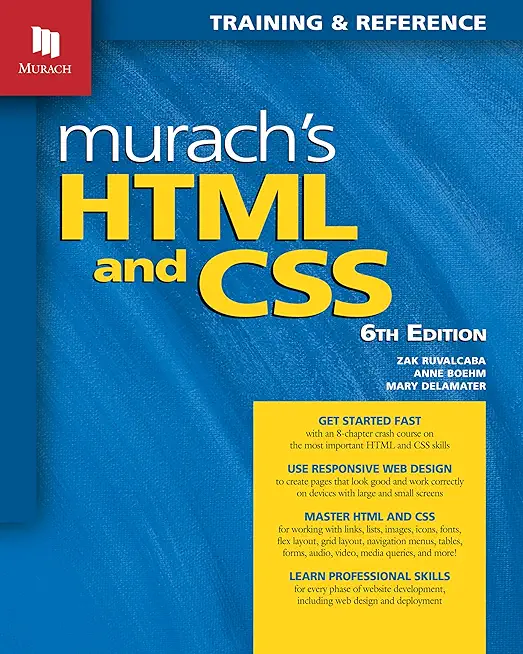DevOps Foundations for Java with Git, Jenkins, and Maven Training in Rochester
Enroll in or hire us to teach our DevOps Foundations for Java with Git, Jenkins, and Maven class in Rochester, Minnesota by calling us @303.377.6176. Like all HSG
classes, DevOps Foundations for Java with Git, Jenkins, and Maven may be offered either onsite or via instructor led virtual training. Consider looking at our public training schedule to see if it
is scheduled: Public Training Classes
Provided there are enough attendees, DevOps Foundations for Java with Git, Jenkins, and Maven may be taught at one of our local training facilities.
|
We offer private customized training for groups of 3 or more attendees.
|
||
Course Description |
||
| DevOps is the combination of cultural philosophies, practices, and tools
that increases an organization's abil1ity to delivery applications and
services at high velocity. Under a DevOps model, a development and
operations teams are no longer "siloed". Quality assurance
team also becomes more tightly integrated with development and
operations and throughout the application lifecycle. Web Age Solution's
DevOps BootCamp course covers the DevOps principles and tools required
for end-to-end implementation of DevOps. The audience for this course
are: Software Developers, Team Leads, Enterprise Architects, Solution
Architects, and Information Technology Architects
Course Length: 3 Days
Course Tuition: $2250 (US) |
||
Prerequisites |
|
| Some knowledge of Java is beneficial | |
Course Outline |
|
Chapter 1. DevOps Fundamentals
Why DevOps
What is DevOps?
Collaborative, Matrixed and Cross-Functional Teams
Key Components of Successful DevOps Teams
DevOps-ification
DevOps Vocabulary
DevOps Goals
Not DevOps - Crush Buzzwords
Driving Business Outcomes with DevOps
Technology-Enabled Business
DevOps Key Enabler for Digital Transformation
Core Values and Mission
Core Values - Culture
Core Values - Automation
Core Values - Measurement
Core Values - Sharing
Communication
Collaboration
Value Stream Mapping
Behavioral Patterns for Success
DevOps Org Structures
DevOps Team - Separate
DevOps Merged Organization
DevOps Overlapped Organization
Organizational Structure Leadership
What Does Continuous Delivery Mean?
Deployment Pipelines
Your Organization is Doing CD if …
Pipelining for CD
Continuous Integration
CI Pipeline
CD & CI Methodologies
Key Tool Categories for CI/CD
Summary
Chapter 2. Introduction to Git
What is Git
Git's Design Goals
Git's Design Goals (cont'd)
Branching and Merging
Branching and Merging (cont'd)
Centralized Version Control
Distributed Version Control
Git Basics
Git Basics (Cont'd)
Git Basics (cont'd)
Getting Git
Git on the Server
Git Repository Managers
Git on Somebody Else's Server
Summary
Chapter 3. Basic Git Operations
Using Git
Definitions
Definitions (cont'd)
Repository (cont'd)
Definitions (cont'd)
Commit
Commit (continued)
How to Think About Commits
Viewing History
Configuring Git
Configuration Scope
User Identification
User Identification (cont'd)
GPG Signing
Gnu Privacy Guard
GPG Basics
GPG and Git
.gitignore
Other Useful Configurations
Summary
Chapter 4. Branching, Merging and Remotes
Branching
Branches in Git
Branches in Git (cont'd)
Merge
Merge (cont'd)
Fast Forward Merge
--no-ff
More Than One Repository
Working with Remotes
Fetch and Pull
Push
Pull Requests
Tagging a Commit
Lightweight Tags
Annotated Tags
Sharing Tags
Checking Out a Tag
Summary
Chapter 5. Introduction to GitFlow
What is GitFlow
Benefits
How GitFlow works?
How GitFlow works? (Contd.)
What is GitFlow? (Contd.)
How GitFlow works? (Contd.)
GitFlow Extension
Initializing GitFlow
Features
Release
Hotfixes
Summary
Chapter 6. Continuous Code Quality
Continuous Code Quality
What is SonarQube
SonarQube - Benefits
SonarQube (Multilingual)
Seven Axes of Quality
Potential Bugs
Tests
Comments and Duplication
Architecture and Design
Complexity
SonarQube Installation
SonarQube Components
Code Quality (LOC, Code Smells)
Code Quality (Project Files)
Code Quality (Code)
Summary
Chapter 7. Introduction to Continuous Integration, Continuous Delivery and Jenkins-CI
Foundation of Agile AppDev
XP Flow
Extreme Programming
Agile Development
What is Continuous Integration
What is Continuous Integration (cont'd)
Typical Setup for Continuous Integration
Setup Notes for Continuous Integration
CI with Artifact Management
What is Continuous Delivery?
Why Continuous Delivery?
DevOps and Continuous Delivery
Continuous Delivery Challenges
Continuous Delivery vs Continuous Deployment
Jenkins Continuous Integration
Jenkins Features
Running Jenkins
Summary
Chapter 8. Introduction to Apache Maven
Build Tools for Java
Build Tools for Java (cont'd)
History of Build Tools
Traditional Scripting
'make'
Problems with Make
Manual Build with JavaC
ANT
Pros and Cons of Ant
Apache Maven
Goals of Maven
What is Apache Maven?
What is Apache Maven (cont'd)
Why Use Apache Maven?
The Maven EcoSystem
Consistent Easy-to-Understand Project Layout
Convention Over Configuration
Maven is Different
Maven Projects have a Standardized Build
Effect of Convention Over Configuration
Importance of Plugins
A Key Point on Maven!
Summary – Key Features of Maven
Chapter 9. Installing and Running Apache Maven
Downloading Maven
Installing Maven
Run From Command Line
Running Inside an IDE
Settings.xml
Local Repository
Summary
Chapter 10. Installing and Running Jenkins
Downloading and Installing Jenkins
Running Jenkins as a Stand-Alone Application
Running Jenkins as a Stand-Alone Application (cont'd)
Running Jenkins on an Application Server
The Jenkins Home Folder
Installing Jenkins as a Windows Service
Initial Configuration
Configuration Wizard
Configuration Wizard (cont'd)
Configuring Tools
Configuring Tools - Best Practices
Logging in Jenkins
Custom Log Recorders
Summary
Chapter 11. Job Types in Jenkins
Introduction
Different types of Jenkins Items
Different types of Jenkins Items (cont'd)
Configuring Source Code Management(SCM)
Working with Subversion
Working with Subversion (cont'd)
Working with Git
Storing Credentials
Service Accounts
Storing Credentials (cont'd)
Build Triggers
Schedule Build Jobs
Polling the SCM
Polling vs Triggers
Maven Build Steps
Summary
Chapter 12. Getting Started With Maven
Terminology and Basic Concepts
Artifacts
Lifecycle
Default Lifecycle
Plugins
Running Maven - the Story So Far
Running Maven from an IDE
Common Goals
pom.xml
Example
Example (cont'd)
Artifact Coordinates
Standard Layout for Sources
Summary
Chapter 13. A Web Application in Maven
A More Complex Project
Putting it Together With Maven
Packaging the Target Artifact
The Source Tree
Dependencies
Transitive Dependencies
Dependency Scope
Working With Servers
Declaring and Configuring Plugins
Running the Plugin
Binding a Plugin Goal to the Lifecycle
Archetypes
Summary
Chapter 14. Commonly Used Plugins
Maven Plugins
Declaring and Configuring Plugins
Running the Plugin
Binding a Plugin Goal to the Lifecycle
Maven Surefire Test Plugin
Failsafe Plugin
Site Plugin
JavaDoc Plugin
PMD Plugin
Code Coverage – Cobertura
Summary
Chapter 15. Creating Archetypes
Introduction to Maven Archetypes
Introduction to Maven Archetypes (cont.)
Using Interactive Mode to generate Goal
Common Maven Archetypes
Summary
Chapter 16. Repository Management
Maven's Approach to Artifacts
Publishing Artifacts
Summary of Maven's Artifact Handling
Repository
Repository Manager
Proxy Remote Repositories
Types of Artifacts
Release Artifacts
Snapshot Artifacts
Reasons to Use a Repository Manager
Repository Coordinates
Addressing Resources in a Repository
Summary
Chapter 17. Release Management
What is release Management?
Release Management with Nexus
Release Management with Maven
Summary
Chapter 18. Jenkins Plugins
Introduction
Jenkins Plugins - SCM
Jenkins Plugins – Build and Test
Jenkins Plugins – Analyzers
Jenkins for Teams
Installing Jenkins Plugins
Summary
Chapter 19. Securing Jenkins
Jenkins Security - Overview
Jenkins Security
Authentication
Authorization
Confidentiality
Activating Security
Configure Authentication
Using Jenkins's Internal User Database
Creating Users
Authorization
Matrix-Based Security
Note – Create the Administrative User
Project-based Matrix Authorization
Project-Based Authentication
Role Based Access Control
Conclusion
Chapter 20. Distributed Builds with Jenkins
Distributed Builds - Overview
Distributed Builds – How?
Agent Machines
Configure Jenkins Master
Configure Projects
Conclusion
Chapter 21. Continuous Delivery and the Jenkins Pipeline
Continuous Delivery
Continuous Delivery (cont'd)
DevOps and Continuous Delivery
Continuous Delivery Challenges
Continuous Delivery with Jenkins
The Pipeline Plugin
The Pipeline Plugin (cont'd)
Defining a Pipeline
A Pipeline Example
Pipeline Example (cont'd)
Parallel Execution
Creating a Pipeline
Invoking the Pipeline
Interacting with the Pipeline
Pipeline vs Traditional Jobs
Conclusion
Chapter 22. Best Practices for Jenkins
Best Practices - Secure Jenkins
Best Practices - Users
Best Practices - Backups
Best Practices - Reproducible Builds
Best Practices - Testing and Reports
Best Practices - Large Systems
Best Practices - Distributed Jenkins
Best Practices - Summary
Lab Exercises
Lab 1. Version Control - Git
Lab 2. Branching, Merging and Working with Remotes
Lab 3. GitFlow Workflow
Lab 4. Configure Tools in Jenkins
Lab 5. Install Maven
Lab 6. Create a Maven Project
Lab 7. Create a Web Application from an Archetype
Lab 8. Add Web Site, Static Analysis, and Code Coverage
Lab 9. Create a Jenkins Job
Lab 10. A Multi-Module Project
Lab 11. Create a Standard Set of Dependencies
Lab 12. Write a Simple Maven Plugin
Lab 13. Create an Archetype
Lab 14. Create a Corporate Repository
Lab 15. Deploy to the Corporate Repository
Lab 16. Add Development Metrics
Lab 17. Create a Pipeline
|
Course Directory [training on all levels]
Technical Training Courses
Software engineer/architect, System Admin ... Welcome!
- .NET Classes
- Agile/Scrum Classes
- AI Classes
- Ajax Classes
- Android and iPhone Programming Classes
- Azure Classes
- Blaze Advisor Classes
- C Programming Classes
- C# Programming Classes
- C++ Programming Classes
- Cisco Classes
- Cloud Classes
- CompTIA Classes
- Crystal Reports Classes
- Data Classes
- Design Patterns Classes
- DevOps Classes
- Foundations of Web Design & Web Authoring Classes
- Git, Jira, Wicket, Gradle, Tableau Classes
- IBM Classes
- Java Programming Classes
- JBoss Administration Classes
- JUnit, TDD, CPTC, Web Penetration Classes
- Linux Unix Classes
- Machine Learning Classes
- Microsoft Classes
- Microsoft Development Classes
- Microsoft SQL Server Classes
- Microsoft Team Foundation Server Classes
- Microsoft Windows Server Classes
- Oracle, MySQL, Cassandra, Hadoop Database Classes
- Perl Programming Classes
- Python Programming Classes
- Ruby Programming Classes
- SAS Classes
- Security Classes
- SharePoint Classes
- SOA Classes
- Tcl, Awk, Bash, Shell Classes
- UML Classes
- VMWare Classes
- Web Development Classes
- Web Services Classes
- Weblogic Administration Classes
- XML Classes
Business Training Courses
Project Managers, Business Analysts, Paralegals ... Welcome!
Upcoming Classes
Gain insight and ideas from students with different perspectives and experiences.






